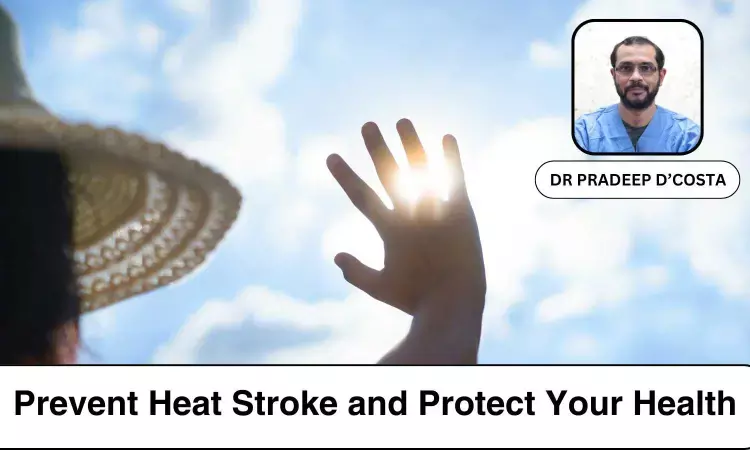- Home
- Medical news & Guidelines
- Anesthesiology
- Cardiology and CTVS
- Critical Care
- Dentistry
- Dermatology
- Diabetes and Endocrinology
- ENT
- Gastroenterology
- Medicine
- Nephrology
- Neurology
- Obstretics-Gynaecology
- Oncology
- Ophthalmology
- Orthopaedics
- Pediatrics-Neonatology
- Psychiatry
- Pulmonology
- Radiology
- Surgery
- Urology
- Laboratory Medicine
- Diet
- Nursing
- Paramedical
- Physiotherapy
- Health news
- Fact Check
- Bone Health Fact Check
- Brain Health Fact Check
- Cancer Related Fact Check
- Child Care Fact Check
- Dental and oral health fact check
- Diabetes and metabolic health fact check
- Diet and Nutrition Fact Check
- Eye and ENT Care Fact Check
- Fitness fact check
- Gut health fact check
- Heart health fact check
- Kidney health fact check
- Medical education fact check
- Men's health fact check
- Respiratory fact check
- Skin and hair care fact check
- Vaccine and Immunization fact check
- Women's health fact check
- AYUSH
- State News
- Andaman and Nicobar Islands
- Andhra Pradesh
- Arunachal Pradesh
- Assam
- Bihar
- Chandigarh
- Chattisgarh
- Dadra and Nagar Haveli
- Daman and Diu
- Delhi
- Goa
- Gujarat
- Haryana
- Himachal Pradesh
- Jammu & Kashmir
- Jharkhand
- Karnataka
- Kerala
- Ladakh
- Lakshadweep
- Madhya Pradesh
- Maharashtra
- Manipur
- Meghalaya
- Mizoram
- Nagaland
- Odisha
- Puducherry
- Punjab
- Rajasthan
- Sikkim
- Tamil Nadu
- Telangana
- Tripura
- Uttar Pradesh
- Uttrakhand
- West Bengal
- Medical Education
- Industry
Measures to Prevent Heat Stroke and Protect Your Health - Dr Pradeep D’costa

As the high summer temperature is already there with us, it's an important time to take some proactive steps to avoid heat stroke and safeguard overall well-being. Heatstroke is quite a serious heat-related sickness that involves a core body temperature of over 104 degrees Fahrenheit, which can bring very hazardous health effects, including organ damage or other severe issues.
With the ever-increasing temperature of Earth, every year registers a hike in the number of cases of illnesses related to heat, like heat stroke. However, an illustration follows of some of the measures that can be applied both in preventing and protecting against heat stroke.
Understanding and Recognizing Timely intervention to symptoms of heatstroke is a dire need. Manifesting features may be high body temperature, rapid pulse, headache, dizziness, nausea, confusion, and dry skin that does not sweat. The person who has these symptoms should be brought to the attention of the medical staff on an emergency basis since the condition can easily go out of hand and has a potential danger to life.
Preventive Measures
Here are ten proactive measures you can take to prevent heat stroke and safeguard your health:
1. Stay Hydrated - Increase your fluid intake to maintain hydration, especially during hot weather. Drinking water regularly throughout the day is crucial as dehydration can accelerate the onset of heat-related illnesses.
2. Wear Appropriate Clothing - Choose lightweight, light-colored, and loose-fitting clothing. Such attire reflects heat and allows your body to maintain normal temperatures.
3. Limit Sun Exposure - Stay indoors during the hottest part of the day, usually from 10 AM to 4 PM. If you must be outside, seek shade and avoid direct sunlight to reduce the risk of overheating.
4. Use Sunscreen - Apply a broad-spectrum sunscreen with an SPF of 30 or higher to protect your skin from UV rays. Reapply every two hours, or more often if swimming or sweating.
5. Adopt Cooling Techniques - Use cool compresses, misting fans, or take cool showers to help lower your body temperature if you feel overheated.
6. Monitor Physical Activity - Reduce intense physical activities during hot days. Schedule workouts and strenuous activities during cooler parts of the day, such as early morning or evening.
7. Utilize Environmental Controls - Use air conditioning to cool indoor spaces. If AC is not available, use fans along with methods like opening windows at night to bring in cooler air.
8. Acclimate to the Environment - Gradually increase the time you spend in the heat to help your body adapt to higher temperatures. This is particularly important for those who are not used to hot weather.
9. Be Aware of Vulnerable Individuals - Keep a close watch on the elderly, children, and those with pre-existing health conditions, as they are more susceptible to heat stroke. Ensure they are taking appropriate measures to stay cool and hydrated.
10. Use Technology and Tools - Consider using wearable technology that can monitor body temperature and physiological responses to heat. Devices like these can provide critical warnings when you are at an increased risk of heat-related illnesses.
Implementing these simple strategies can significantly reduce the risk of heat stroke. Awareness and preparedness are key in dealing with extreme temperatures, ensuring you and your loved ones remain safe during hot weather periods.
Disclaimer: The views expressed in this article are of the author and not of Medical Dialogues. The Editorial/Content team of Medical Dialogues has not contributed to the writing/editing/packaging of this article.
Dr Pradeep D'Costa MBBS, DNB (General Medicine) is a senior consultant of internal medicine at Sahyadri Super Speciality Hospital, Pune, and has over 20 years of experience. Dr Pradeep D'Costa specializes in the field of Internal Medicine.


